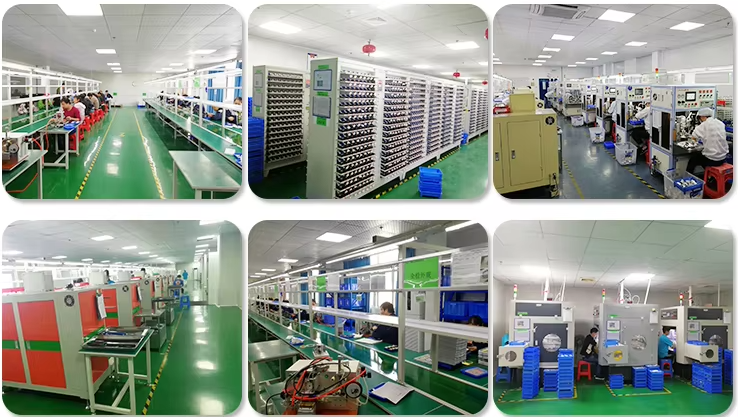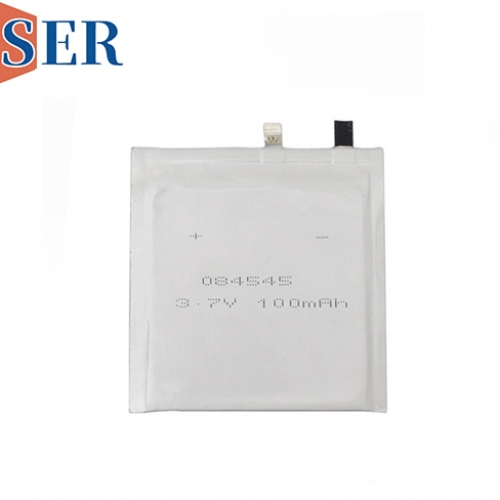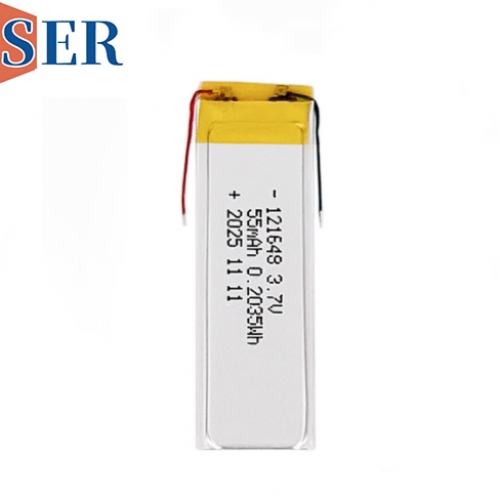CP305050 Li-MnO₂ Ultra-Thin Primary Pouch Battery for RFID, Wireless Sensors and GPS Positioning Devices
CP305050 Li-MnO₂ Ultra-Thin Primary Pouch Battery for RFID, Wireless Sensors and GPS Positioning Devices

Introduction
In the era of interconnected devices and IoT (Internet of Things) proliferation, the demand for compact, long-lasting, and reliable power solutions has never been more critical. RFID tags, wireless sensors, and GPS positioning devices—key pillars of smart industries, logistics, and asset tracking—require batteries that combine ultra thin battery profiles, high energy density, and extended shelf life to operate in space-constrained, low-maintenance environments. Enter the CP305050 lithium manganese dioxide (Li-MnO₂) battery: a non-rechargeable, ultra-thin soft pack primary battery engineered to meet the stringent power demands of these mission-critical applications.
Available in two core capacity variants—1500mAh and 1800mAh—with a nominal voltage of 3.0V, the CP305050 Li-MnO₂ pouch battery embodies the perfect fusion of form and function. Its flat, soft pack design, ultra-thin profile, and lithium manganese dioxide chemistry deliver exceptional energy density, minimal self-discharge, and robust performance in diverse operating conditions. Whether labeled as “CP305050 Limno2 Battery,” “ultra thin non-rechargeable soft Li-mno2 flat lithium ion battery,” or “lithium manganese primary battery,” this product has emerged as the preferred power source for engineers and manufacturers seeking to optimize the performance of RFID systems, wireless sensors, and GPS positioning devices.
This article provides a comprehensive analysis of the CP305050 battery Li-MnO₂ ultra-thin primary pouch battery, covering its technical specifications, chemistry and design innovations, performance characteristics, application-specific advantages, safety features, manufacturing process, quality control standards, and market impact. With an integrated comparison table of its two capacity variants, this resource aims to serve industry stakeholders, product designers, procurement professionals, and technology enthusiasts seeking a detailed understanding of why the CP305050 stands out as a leading primary battery solution for low-power, long-duration IoT applications.
1. Technical Specifications: Core Parameters of the CP305050 Li-MnO₂ Battery
1.1 Key Electrical and Physical Attributes
The CP305050 Li-MnO₂ battery is defined by a set of precise technical parameters that align with the needs of low-power, compact devices. Below is a detailed breakdown of its core specifications, including a side-by-side comparison of the 1500mAh and 1800mAh variants:
1.2 Model Number Decoding
The CP305050 model number follows a industry-standard naming convention for pouch batteries, where each character corresponds to key physical dimensions (length × width × thickness in millimeters):
This naming system simplifies product identification for manufacturers, ensuring compatibility with device battery compartments designed for specific dimensions.
1.3 Chemistry Overview: Li-MnO₂ Primary Battery Technology
The CP305050 leverages lithium manganese dioxide (Li-MnO₂) chemistry, a widely adopted technology for primary (non-rechargeable) batteries in low-power applications. This chemistry is chosen for its unique combination of energy density, stability, and cost-effectiveness, making it ideal for devices requiring long-term, maintenance-free power.
Key aspects of Li-MnO₂ chemistry in the CP305050:
2. Design Innovations: Ultra-Thin Soft Pouch for Compact Integration
2.1 Ultra-Thin Flat Profile
The CP305050’s most distinctive design feature is its ultra-thin flat form factor, with thicknesses ranging from 5.0mm (1500mAh) to 5.8mm (1800mAh). This slim profile is achieved through advanced electrode stacking and pouch packaging techniques, eliminating the need for rigid casings (common in cylindrical or prismatic batteries) that add bulk.
For devices like RFID tags (typically 3–8mm thick) or wireless sensor modules (often integrated into tight spaces), the CP305050’s thinness is a game-changer. It can be embedded directly into device housings without compromising the product’s overall size or aesthetics, a critical advantage for applications where miniaturization is a key design goal.
2.2 Soft Pouch Construction
The battery features a soft pouch casing made of a multi-layered film (aluminum foil laminated with polypropylene and polyethylene). This construction offers several key benefits over rigid casings:
2.3 Electrode Stacking Optimization
To maximize capacity while maintaining a slim profile, the CP305050 uses a precision electrode stacking process. Unlike wound electrode designs (common in cylindrical batteries), which create air gaps and increase thickness, the CP305050’s electrodes are stacked in thin, uniform layers:
2.4 Terminal Design for Easy Integration
The CP305050 is equipped with thin nickel tabs (0.1mm thick) as terminals, which can be customized for soldering directly to device circuits or fitted with connectors (e.g., JST, Micro-Fit) based on manufacturer needs. The tabs are positioned along the edge of the pouch, allowing for compact routing within the device and reducing the risk of terminal damage during assembly.
This user-friendly terminal design streamlines the manufacturing process, enabling fast, reliable integration into RFID modules, sensor PCBs, and GPS device circuits.
3. Performance Characteristics: Reliability for Long-Duration Applications
3.1 Capacity and Discharge Performance
The CP305050’s capacity (1500mAh and 1800mAh) is optimized for low-power, intermittent discharge—typical of RFID, wireless sensor, and GPS positioning devices. These applications draw small currents (often 1–10mA during operation, with microampere-level standby currents), allowing the battery to deliver consistent power over extended periods.
Key discharge performance metrics:
3.2 Shelf Life and Self-Discharge Rate
One of the most critical performance attributes of primary batteries for IoT applications is shelf life—the length of time the battery can retain its capacity while idle. The CP305050 excels in this area, thanks to the inherent stability of Li-MnO₂ chemistry and the hermetic pouch sealing.
3.3 Voltage Stability
Consistent voltage output is essential for the reliable operation of low-power electronics, which often have strict voltage thresholds. The CP305050 maintains a flat discharge curve, with voltage remaining between 2.8V and 3.0V for most of its lifespan. This stability eliminates the need for voltage regulation circuits in some devices, reducing design complexity and cost.
For example:
3.4 Durability and Environmental Resistance
The CP305050 is designed to withstand the rigors of real-world deployment, with durability features that make it suitable for indoor and outdoor use:
4. Application-Specific Advantages: Powering RFID, Wireless Sensors, and GPS Devices
The CP305050 Li-MnO₂ battery is engineered to address the unique power challenges of three key applications: RFID systems, wireless sensors, and GPS positioning devices. Below is a detailed breakdown of how its design and performance align with each application’s needs.
4.1 RFID Systems (Radio-Frequency Identification)
RFID technology is used for asset tracking, inventory management, access control, and supply chain visibility. RFID tags (active and semi-passive) require batteries that are compact, long-lasting, and capable of delivering short pulse currents for data transmission.
Why the CP305050 is ideal for RFID:
Common RFID applications for the CP305050:
4.2 Wireless Sensors
Wireless sensors are deployed in millions of locations worldwide to monitor environmental conditions (temperature, humidity, pressure), equipment performance (vibration, voltage), and asset status (presence, movement). These sensors require batteries that can operate for 5–10 years without replacement, even in remote or hard-to-reach locations.
Why the CP305050 is ideal for wireless sensors:
Common wireless sensor applications for the CP305050:
4.3 GPS Positioning Devices
GPS positioning devices (e.g., asset trackers, pet collars, wearable trackers) require batteries that are lightweight, compact, and capable of delivering consistent power for satellite communication. These devices often operate intermittently (e.g., transmitting location data every 10 minutes) and may be exposed to harsh outdoor conditions.
Why the CP305050 is ideal for GPS positioning devices:
Common GPS positioning applications for the CP305050:
5. Safety Features: Ensuring Reliability in Critical Applications
Safety is paramount for primary batteries used in IoT devices, which are often deployed in remote locations or in close proximity to assets, people, or sensitive equipment. The CP305050 Li-MnO₂ battery incorporates multiple safety features to mitigate risks such as leakage, overheating, and short circuits.
5.1 Inherent Chemical Stability
Li-MnO₂ chemistry is inherently stable, with a low risk of thermal runaway (a major concern with some rechargeable lithium chemistries). The electrochemical reaction is irreversible but non-explosive, even under abnormal conditions (e.g., over-discharge, short circuit). Unlike lithium-thionyl chloride (Li-SOCl₂) batteries (another primary chemistry), Li-MnO₂ does not produce toxic gases during discharge, making it safer for indoor use or devices in enclosed spaces.
5.2 Hermetic Pouch Sealing
The multi-layered pouch casing is heat-sealed at high temperature and pressure, creating a hermetic barrier that prevents electrolyte leakage and oxygen ingress. This sealing:
5.3 Short Circuit Protection
While primary batteries do not require the same complex protection circuits as rechargeable batteries, the CP305050 includes a built-in PTC (Positive Temperature Coefficient) resistor to mitigate short circuit risks. The PTC resistor:
5.4 Mechanical Safety Design
The battery’s soft pouch construction also contributes to safety:
5.5 Compliance with International Safety Standards
The CP305050 meets rigorous international safety standards, ensuring its reliability for global applications:
6. Manufacturing Process: Precision and Quality for Reliable Performance
The production of the CP305050 Li-MnO₂ ultra-thin pouch battery requires strict quality control and advanced manufacturing techniques to ensure consistency, reliability, and adherence to technical specifications. Below is a detailed overview of the manufacturing process.
6.1 Raw Material Sourcing
Quality begins with raw material selection, with each component sourced from certified suppliers:
6.2 Electrode Preparation
6.3 Cell Assembly
6.4 Electrolyte Injection and Sealing
6.5 Final Testing and Quality Control
Every CP305050 battery undergoes rigorous testing before leaving the factory:
6.6 Packaging
Approved batteries are packaged in anti-static bags to prevent electrostatic discharge (ESD) damage. Each bag contains 10–20 batteries, and multiple bags are placed in cardboard boxes with foam padding for protection during transportation. Boxes are labeled with product specifications, safety warnings, and certification marks (UN38.3, CE, RoHS).
7. Quality Control and Assurance: Meeting Global Standards
The CP305050’s reliability is underpinned by a comprehensive Quality Management System (QMS) certified to ISO 9001:2015. Key quality control and assurance measures include:
7.1 In-Process Quality Control (IPQC)
IPQC inspectors monitor every stage of production to identify defects early:
7.2 Statistical Process Control (SPC)
Manufacturing processes are monitored using SPC tools to track key performance indicators (KPIs) such as capacity variation, sealing integrity, and voltage consistency. Control charts are used to identify trends and deviations, allowing for corrective action before defects occur. For example:
7.3 Batch Testing
Random samples from each production batch (1% of the batch, minimum 20 batteries) undergo additional reliability testing:
Batch test results are documented and retained for 10 years. If a batch fails any test, the entire batch is quarantined, and root cause analysis is performed to prevent recurrence.
7.4 Customer Quality Support
The manufacturer provides comprehensive quality support to customers, including:
8. Market Trends and Competitive Advantages
8.1 Market Overview: Growth of IoT-Driven Primary Batteries
The global primary lithium battery market is projected to grow at a CAGR of 8.2% from 2023 to 2030, reaching $18.7 billion by 2030 (Grand View Research). This growth is driven by the proliferation of IoT devices, including RFID tags, wireless sensors, and GPS trackers, which require long-lasting, compact power solutions.
Key market drivers:
The CP305050 is well-positioned to capitalize on this growth, as it addresses the core needs of these high-growth applications.
8.2 Competitive Advantages of the CP305050
Compared to alternative primary battery technologies (e.g., alkaline, zinc-air, Li-SOCl₂) and competing Li-MnO₂ batteries, the CP305050 offers several key advantages:
Key differentiators for the CP305050:
8.3 Future Developments
To maintain its competitive edge, the manufacturer is investing in research and development to enhance the CP305050’s performance:
9. Conclusion
The CP305050 ultra-thin Li-MnO₂ primary pouch battery represents a benchmark in power solutions for IoT-driven applications, including RFID systems, wireless sensors, and GPS positioning devices. Its unique combination of ultra-thin form factor (5.0–5.8mm), high capacity (1500–1800mAh), long shelf life (10 years), and robust safety features makes it the ideal choice for manufacturers seeking to optimize the performance, size, and reliability of their compact electronic devices.
From its Li-MnO₂ chemistry—delivering stable voltage and minimal self-discharge—to its soft pouch design enabling flexible integration, every aspect of the CP305050 is engineered to address the unique challenges of low-power, long-duration applications. Its compliance with international safety standards, rigorous quality control processes, and application-specific optimizations ensure that it performs reliably in diverse environments, from industrial warehouses to outdoor logistics and wearable technology.
As the IoT ecosystem continues to expand, the demand for compact, long-lasting primary batteries will only grow. The CP305050 is well-positioned to lead this market, empowering innovation in smart supply chains, industrial IoT, and wearable technology. For engineers and manufacturers, it offers a versatile, cost-effective power solution that balances performance, size, and safety—proving that even the smallest devices can deliver big results with the right battery.
Whether powering an RFID tag tracking a shipment across the globe, a wireless sensor monitoring industrial machinery, or a GPS tracker ensuring the safety of a loved one, the CP305050 Li-MnO₂ battery is more than just a power source—it’s a reliable partner in keeping the world connected, efficient, and secure.





